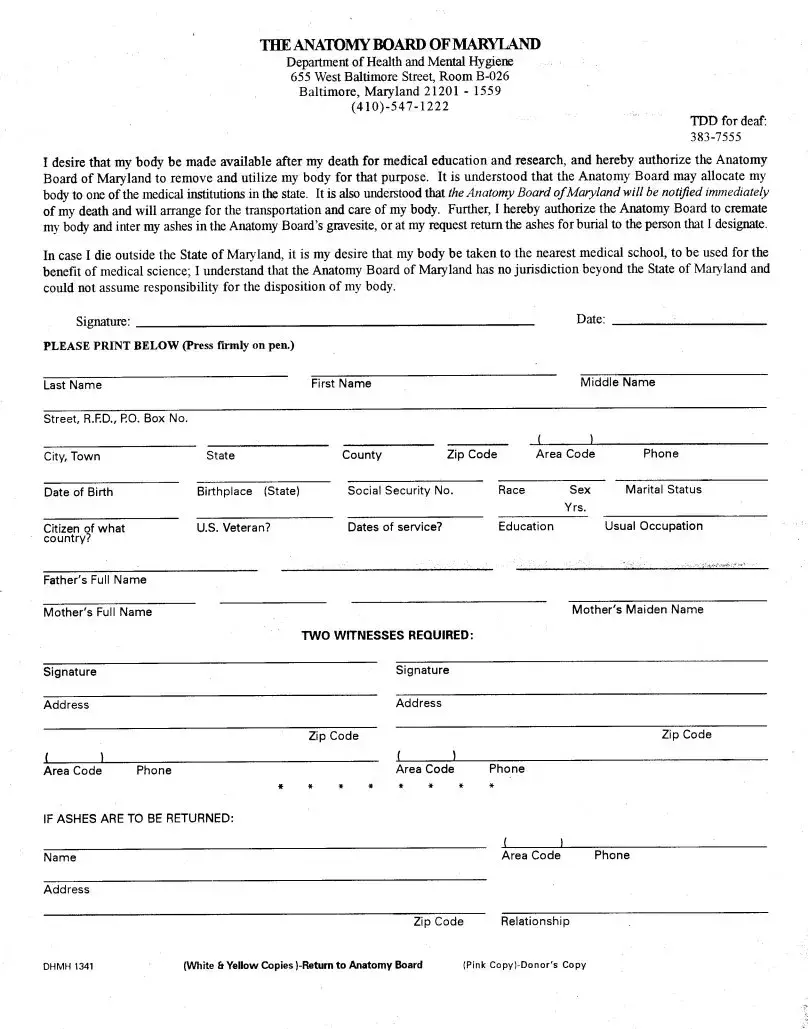Steps to Filling Out Maryland Anatomy
Filling out the Maryland Anatomy form is a crucial step for those who are making important decisions about their future. Whether for medical, scientific, or research purposes, the information you provide will ensure your wishes are respected and followed. The process can be straightforward if approached methodically. Below, you'll find a step-by-step guide to help you navigate through the form, ensuring no detail is overlooked. By taking the time to carefully provide your information, you are taking an important step in planning for the future. Here’s how you can complete the form accurately and thoroughly.
- Begin by reading the form thoroughly before writing anything. Understanding the scope and purpose of each section will help in providing accurate and thoughtful information.
- Enter your full legal name in the space provided. It's crucial that the name matches your identification documents to avoid any confusion or legal issues in the future.
- Supply your complete address, including city, state, and ZIP code. This ensures any correspondence or important information reaches you without delay.
- Provide your date of birth in the specified format. Accurate age information is important for record-keeping and any future considerations that may rely on this demographic detail.
- List your next of kin, including their relationship to you. In many cases, they will be contacted for confirmation or in the event of any questions, so ensure their details are current.
- Indicate your wishes clearly in the sections provided. Whether you're consenting to donate for medical studies, training, or other specific purposes, clarity here is vital. Take your time to consider each option.
- Sign and date the form in the designated areas. Your signature is a necessary legal acknowledgment of your decisions and confirms your consent.
- Finally, have a witness sign the form if required. This step verifies that you were of sound mind and not under duress when making these decisions.
Once you've completed the Maryland Anatomy form, the next steps involve proper submission according to the instructions provided with the form. Ensure that you keep a copy for your records. Submission might include mailing it to the specified address or delivering it in person, depending on the instructions. After submission, rest assured knowing that you have taken a significant step in personal planning, contributing positively to future scientific and medical advancements. Your actions can have a profound impact, and your efforts in completing this form are both acknowledged and appreciated.
